- Home
- Joyce Carol Oates
High Crime Area: Tales of Darkness and Dread Page 3
High Crime Area: Tales of Darkness and Dread Read online
Page 3
We believed that we would die in the Home at Craigmillnar, as Patrick had died, and so many others. We had lost all hope of ever leaving. We were made to pray on our knees, on the bare floor—the prayer I remember was Christ have mercy! Christ have mercy! Christ have mercy!
It was a custom of the Craigmillnar staff to punish children for being ill by refusing to treat their illnesses or medical conditions—rheumatic heart, asthma, pneumonia, diabetes, influenza; contagious sicknesses like chicken pox, measles, and mumps, even diphtheria, swept through the drafty filthy dormitories. Catholic physician-consultants who were allegedly on the Craigmillnar staff failed to come to the home or, if they did, spent most of their time chatting with the Mother Superior and did not meet with sick children.
Children who died were often buried before their relatives were notified, in unmarked graves at the rear of St. Simon’s churchyard a few miles away.
We never knew if any child had actually been killed outright, in the years we were there. There were rumors of such murders in the past. It was more likely a child might die of injuries eventually, or was let to die of illness. There were many “accidents”—falling down stairs, scalding yourself in the kitchen. Patrick was always hurting himself, and being “disciplined.” He’d had asthma before Craigmillnar, that had not been treated. He got sick, he was never well but always coughing, puking. He coughed so hard, his ribs cracked. We begged the nuns to help him, to take him to a hospital, we thought that we could take him ourselves if we were allowed, we knew that pneumonia had to be treated with “oxygen” but the nuns laughed at us, and screamed at us to shut up. Mother Superior Mary Alphonsus knew of such things, and did not care. She had her own TV in her room. She ate well, she favored sweets. She had a heavy woolen coat and good leather boots for our terrible winters.
He died in January 1953. We had last seen him in the drafty, dank place called the Infirmary. He could scarcely breathe. There was a terrible wheezing in his lungs. It sounded like a wheezing of air from another part of the room—we kept looking up at the windows, that were so high, and ill-fitting. Patrick was shivering, yet his skin was burning-hot. His eyes were enormous in his face. His teeth chattered. He could not speak to us—he was too sick. Yet he clutched at us—his hands clutching ours.
He was let to die. They killed him. Asthma and pneumonia, poor Patrick couldn’t breathe. Suffocated and none of them cared. And his body buried in the paupers’ cemetery with the others.
They hadn’t even let us know, when he died. A few days passed, before we were allowed to know.
In St. Simon’s churchyard, the nuns and the priests of Craigmillnar are properly buried, with marble headstones. Facts of their birth-dates and death-dates are inscribed in stone. But the children’s bodies, at the back of the cemetery—there are only little crosses to mark them, crowded together. Dozens of cheap little rotted-wood crosses, each at an angle in the earth. And Patrick, who would have been your youngest uncle, among them.
All their bones mixed together. As if their child-lives had been of no worth.
She had not commented, when the inquiries had first begun a few years ago. The pedophile priests had been protected by their Bishop, also. But investigators for the county and the state began listening to complaints and charges against the Craigmillnar staff. A younger generation of prosecutors and health officials, taking the lead of investigators in other parts of the country. Journalists who weren’t intimidated by the Church because they weren’t Roman Catholics.
Yet, she held her ground. She hid behind a lawyer, the Church provided a lawyer to protect her, because of her position and rank. She had refused to give testimony. She had not been arrested, as some others had been in situations like hers. She’d been served a subpoena to speak before a grand jury in Oybwa County, but had suffered a “collapse”—and so had a medical excuse. With the excuse of being “elderly”—in her late seventies—the woman was spared further “harassment” by the state.
Journalists referred to Sister Mary Alphonsus as the “Angel of Death of Craigmillnar” since so many children had died in the home during her years as director: the estimate was as many as one hundred.
Sister Mary Alphonsus was reported to have asked: how one hundred was too many? They were poor children, from ignorant families, they’d been abandoned by their parents, or by their (unwed) mothers—they were the kind of children who made themselves sick, eating too much, stuffing their bellies, refusing to wash their hands, playing in filth, fighting with one another, falling down stairs, running outdoors—that they would get sick was hardly a surprise, yes and sometimes one of them died. Over twenty-six years it came out to only three or four a year who died, out of the 350 children at the Home: how was that too many?
In the Sign of the Ram we’d been drinking for more than two hours. The men’s voices were low-pitched, trembling with rage. I had scarcely spoken except to murmur My God and Yes. For I was shocked and sickened by what the men had told me—and yet, not so surprised. As my mother would be shocked and sickened and yet—not so surprised. Your father isn’t a man for looking back.
Leaving the pub with my father and my uncle seeing the men older than I’d recalled, each of them walking unsteadily as in fear of pain. And I realized I’d been seeing my father and my uncle walking this way, all of my life. Big men, men for whom the physical life is the primary life, men-who-don’t-complain, men who laugh at discomfort, these were men who’d been deeply wounded as boys, the memory of pain in their tissues, joints, and bones, pain of which they would not ever speak, for to speak in such a way was to betray weakness, and a man does not ever betray weakness. And I felt a son’s rage, and a sick fear that I would not be equal to this rage. For I thought Why have they told me this? Why now?
My car was at my parents’ house. My father drove me back, with Denis. Wasn’t I going to stay the night? my father asked. Laying his hand on my arm. And my mother too asked, wasn’t I going to stay the night, my bed was all made up. Seeing in the men’s flushed faces that something had been revealed, she could not share. I told them no, I wasn’t staying. Not tonight. I had to get back to Eau Claire that night.
My father walked me back outside, to my car in the driveway. And he did not say She is at that place you work—is she. She is in your “care.”
That November morning, the morning of the discovery of the body, I was the first of the early shift to arrive.
In the pitch-dark pelting rain making my way to the side-entrance of the facility. At this early hour the building was but partially lighted, with a warm look inside. No one? No one to see me? Quickly and stealthily I made my way to Unit D, that was near-deserted at this hour. Soon the facility would come awake: the nursing staff and the orderlies would begin their rounds, the patients would be “up” for their interminable day. But not just yet, for it was 5:46 A.M.
From a closet I removed a single pillowcase. In the pocket of my waterproof parka was a three-foot strip of gauzy curtain I’d found in a trash can. I’d snatched it out of the trash—not sure why. A smile had twisted my mouth—What’s this? I thought I would find a purpose for it.
I have learned to trust such instincts. I have learned not to question my motives.
Quietly then I pushed open the door to Sister Mary Alphonsus’s room which was at the end of a corridor. I did not breathe, my rubber-soled sneakers made no sound. Yet the elderly nun was part-awakened by my presence.
I shut the door behind me. Without hesitating, as if I’d practiced this maneuver many times, I stooped over her bed, gripped her shoulder with one hand to hold her still, with the other yanked the pillow out from beneath her head, and pressed it over her face. So swiftly and unerringly I’d moved, Sister Mary Alphonsus had no time to comprehend what was happening, still less to cry out for help. Now in the throes of death she struggled like a maddened animal, her fingers clawing at my wrists.
I was wearing gloves. Her nails would not lacerate my bare skin.
In this struggle of
several minutes I crouched over the figure in the bed, the head and face obscured by the pillow. I was panting, my heart beat quickly but calmly. I did not utter a word.
I thought of my father Douglas, and of my uncle Denis. I thought of my uncle Patrick as a child, whom I had never seen. Buried in a pauper’s grave, and his bones scattered and lost. But I did not speak. I did not accuse the evil woman, for what was there to say? You soon come to the end of speech as you come to the end of cultivated land, and stare out into the wilderness in which there are no names for things, as there are no familiar things. For what words would be adequate at this time, so long after the fact?—God damn your soul to Hell. Disgusting old bitch, this is not the punishment you deserve.
Her hands tried to grip my wrists, to push away the pillow. But her hands grew feeble. I smelled urine. I did not flinch. A pillow held tight over the face of an elderly cardiac patient will snuff out her life within minutes, if you do not flinch.
When I was sure that it was over, I removed the pillow. The pillowcase was soaked with the woman’s saliva, tears. Her body that was surprisingly heavy, with a hard round stomach like an inverted bowl, lay limp and unresisting now. The face like a bulldog’s face, contorted in death. I heard a harsh panting sound—my breathing. Hers had ceased, abruptly.
When death is only a matter of seconds, you think that it might be revoked. Life might be called back, if one had the skill.
But no. Once the match is shaken out, the flame is gone.
Without haste, with the precision of a veteran orderly, I removed the pillow from the soiled pillowcase, and pushed it snugly inside a fresh pillowcase. I took time to shake the pillow well down into the pillowcase. This action so frequently performed by me, in my role as orderly, like clockwork I executed it within seconds.
The bedclothes were badly rumpled, as if churned. These I tidied deftly, tucking in bedsheets as you learn to do in the U.S. Army as well.
There is pleasure in executing small perfect things. One, two, three—completed! On to the next.
(The soiled pillowcase I might have tossed into the laundry. No one would have thought to look for it there—for the death of the eighty-four-year-old nun would not be considered a “suspicious” death. Yet, I was cautious, taking time to fold the pillowcase neatly to slide it into my backpack, to be disposed of when I left work.)
I lifted Sister Mary Alphonsus’s limp head, to wind the strip of cheap gauzy curtain around it, and to hide her flushed and contorted face. Bride of Christ! Here is your wedding veil.
Why did I take time to do this?—why, to risk suspicion where there would be no suspicion?
I’ve thought of it, often. But I don’t know why.
A smile comes over my face at such times—a strange slow smile. Am I happy, is that why I am smiling? Or—is the smile involuntary, a kind of grimace?
I could not have explained any of this. Not even to my father. It seemed the “right” thing to do, at the time. It would be my secret forever.
“Dorothy Milgrum” had left no will, it would be revealed. And so, the deceased woman’s modest estate would be appropriated by the State of Wisconsin.
How much did “Dorothy Milgrum” accumulate, in her years as chief administrator of Craigmillnar? It could not have been much. It was whispered among the staff that there was barely enough money for a decent headstone in the St. Simon’s churchyard at Craigmillnar, where Sister Mary Alphonsus had secured a plot for herself years before.
I was the orderly charged with emptying, cleaning, and preparing the room for the next resident.
In the bureau in Sister Mary Alphonsus’s room, amid her old-woman undergarments, stockings, and woolen socks, there was a packet of letters. I appropriated these, for there was no one to prevent me. It was a surprise to see so many handwritten letters, dated 1950s. Who’d written to the Mother Superior at Craigmillnar so often? And why had the Mother Superior kept these letters? The return address was Cincinnati, Ohio. The stationery was a pale rose color. The salutation was Dear Dotty. The signature was faded maroon ink—it looked like Irene. I tried to read a few lines, but could not decipher the curlycue handwriting. Another nun? A dear friend? There was also a packet of snapshots, yellow and curling. In these, Sister Mary Alphonsus was a young woman in her thirties—with sharp shining eyes, bulldog-face, wide glistening smile. She wore her nun’s dark robes with a certain swagger, as a young priest might wear such attire. The wimple was tight around her face, dazzling-white. Her face looked cruelly and yet sensuously pinched, as in a vise.
In several snapshots the youthful Sister Mary Alphonsus was standing close beside another nun, a stocky broad-shouldered middle-aged woman with a moon-face and very white skin. Both women smiled radiantly at the camera. The older woman had flung off her nun’s hood, her hair was close-cropped, gray. The older woman was taller than Sister Mary Alphonsus by an inch or so.
In the background was a lakeside scene—a rowboat at shore, fishing poles.
In the last of the snapshots the women were again standing close together, now both bare-headed, arms around each other’s waist. These were thick arms and thick waists—these were husky women. Then I saw—it was a shock to see—that both women were barefoot in the grass, at the edge of a pebbly lakeside shore.
I thought—They took these pictures with a time exposure. It was a new idea then.
The snapshots and the letters covered in faded-maroon ink I burnt as I’d burnt the pillowcase soaked with a dead woman’s saliva. If it had been in my power I would have burnt all trace of Sister Mary Alphonsus on this earth but the truth is, some smudge of the woman’s sick soul will endure, multiplied how many hundreds of times, in the memories of others.
I would say nothing—not ever—to my father or to my uncle Denis but a certain long level look passed between us, a look of understanding, yet a look too of yearning, for what was concealed, that could not be revealed. When I next saw them, and the subject of the nun’s death arose. My father had kept a newspaper to show me, the front-page headlines, though I didn’t need to see the headlines, knowing what they were. In a hoarse voice Dad said—Good riddance to bad rubbage.
By which Dad meant rubbish. But I would not correct him.
Now that months have passed there is not much likelihood of a formal inquiry into the death of Sister Mary Alphonsus aka “Dorothy Milgrum.” The Oybwa County medical examiner has never contacted us. Dr. Godai has left Eau Claire to return to Minneapolis, it has been announced. (Many, including me, were disappointed to hear that Dr. Godai is leaving us so soon though it isn’t surprising that a vigorous young doctor like Dr. Godai would prefer to live and work in Minneapolis, and not Eau Claire.) Yet, I have prepared my statement for the medical examiner. I have not written out this statement, for such a statement might seem incriminating if written out, but I have memorized the opening.
Early shift is 6:30 A.M. which was when I arrived at the elder care facility at Eau Claire where I have been an orderly for two years. Maybe thirty minutes after that, when the elderly nun’s body was discovered in her bed.
High
How much, she was asking.
For she knew: she was being exploited.
Her age. Her naïveté. Her uneasiness. Her good tasteful expensive clothes. Her hat.
Over her shimmering silver hair, a black cloche cashmere hat.
And it was the wrong part of town. For a woman like her.
How much she asked, and when she was told she understood that yes, she was being exploited. No other customers on this rainy weekday night in the vicinity of the boarded-up train depot would pay so much. She was being laughed-at. She was being eyed. She was being assessed. It was being gauged of her—Could we take all her money, could we take her car keys and her car, would she dare to report us? Rich bitch.
She knew. She suspected. She was very frightened but she was very excited. She thought I am the person who is here, this must be me. I can do this.
She paid. Never any doubt but that t
he silver-haired lady would pay.
And politely she said, for it was her nature to speak in such a way, after any transaction, Thank you so much!
Self-medicating, you might call it.
Though she hated the weakness implied in such a term—medicating!
She wasn’t desperate. She wasn’t a careless, reckless, or stupid woman. If she had a weakness it was hope.
I need to save myself. I don’t want to die.
Her hair! Her hair had turned, not overnight, but over a period of several distraught months, a luminous silver that, falling to her shoulders, parted in the center of her head, caused strangers to stare after her.
Ever more beautiful she was becoming. Elegant, ethereal.
After his death she’d lost more than twenty pounds.
His death she carried with her. For it was precious to her. Yet awkward like an oversized package in her arms, she dared not set down anywhere.
Almost, you could see it—the bulky thing in her arms.
Almost, you wanted to flee from her—the bulky thing in her arms was a terrible sight.
I will do this, she said. I will begin.

 Starr Bright Will Be With You Soon
Starr Bright Will Be With You Soon My Heart Laid Bare
My Heart Laid Bare A Fair Maiden
A Fair Maiden The Doll-Master and Other Tales of Terror
The Doll-Master and Other Tales of Terror Wild Nights!: Stories About the Last Days of Poe, Dickinson, Twain, James, and Hemingway
Wild Nights!: Stories About the Last Days of Poe, Dickinson, Twain, James, and Hemingway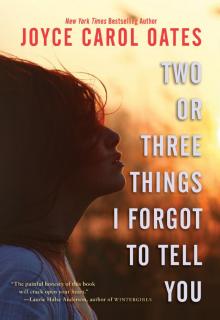 Two or Three Things I Forgot to Tell You
Two or Three Things I Forgot to Tell You Because It Is Bitter, and Because It Is My Heart
Because It Is Bitter, and Because It Is My Heart Missing Mom: A Novel
Missing Mom: A Novel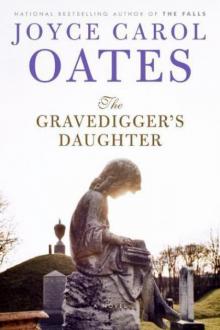 The Gravedigger's Daughter: A Novel
The Gravedigger's Daughter: A Novel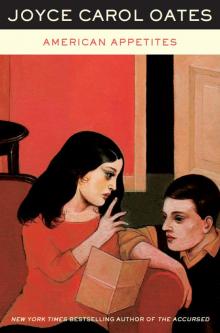 American Appetites
American Appetites Black Dahlia White Rose: Stories
Black Dahlia White Rose: Stories Zombie
Zombie Soul at the White Heat: Inspiration, Obsession, and the Writing Life
Soul at the White Heat: Inspiration, Obsession, and the Writing Life Son of the Morning
Son of the Morning Patricide
Patricide Snake Eyes
Snake Eyes Wonderland
Wonderland In Rough Country: Essays and Reviews
In Rough Country: Essays and Reviews Little Bird of Heaven
Little Bird of Heaven The Haunting
The Haunting The Accursed
The Accursed My Sister, My Love: The Intimate Story of Skyler Rampike
My Sister, My Love: The Intimate Story of Skyler Rampike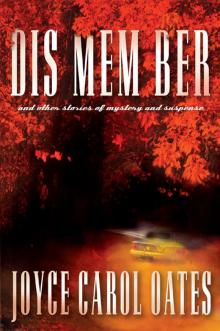 Dis Mem Ber and Other Stories of Mystery and Suspense
Dis Mem Ber and Other Stories of Mystery and Suspense You Can't Catch Me
You Can't Catch Me Daddy Love: A Novel
Daddy Love: A Novel Broke Heart Blues
Broke Heart Blues I'll Take You There
I'll Take You There Mystery, Inc.
Mystery, Inc. We Were The Mulvaneys
We Were The Mulvaneys The Lost Landscape: A Writer's Coming of Age
The Lost Landscape: A Writer's Coming of Age Evil Eye: Four Novellas of Love Gone Wrong
Evil Eye: Four Novellas of Love Gone Wrong Nemesis
Nemesis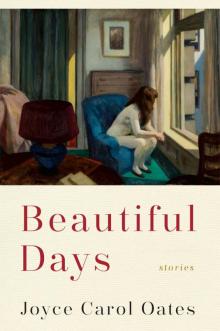 Beautiful Days: Stories
Beautiful Days: Stories On Boxing
On Boxing Mudwoman
Mudwoman Hazards of Time Travel
Hazards of Time Travel Night-Gaunts and Other Tales of Suspense
Night-Gaunts and Other Tales of Suspense Mysteries of Winterthurn
Mysteries of Winterthurn New Jersey Noir
New Jersey Noir Sourland
Sourland Blonde
Blonde The Corn Maiden: And Other Nightmares
The Corn Maiden: And Other Nightmares The Oxford Book of American Short Stories
The Oxford Book of American Short Stories Rape: A Love Story
Rape: A Love Story Lovely, Dark, Deep: Stories
Lovely, Dark, Deep: Stories After the Wreck, I Picked Myself Up, Spread My Wings, and Flew Away
After the Wreck, I Picked Myself Up, Spread My Wings, and Flew Away Freaky Green Eyes
Freaky Green Eyes Night, Neon
Night, Neon I Am No One You Know: And Other Stories
I Am No One You Know: And Other Stories Black Water
Black Water Expensive People
Expensive People The Falls
The Falls Soul/Mate
Soul/Mate The Sacrifice
The Sacrifice The (Other) You
The (Other) You What I Lived For
What I Lived For Prison Noir
Prison Noir High Crime Area: Tales of Darkness and Dread
High Crime Area: Tales of Darkness and Dread Faithless: Tales of Transgression
Faithless: Tales of Transgression Give Me Your Heart: Tales of Mystery and Suspense
Give Me Your Heart: Tales of Mystery and Suspense The Rescuer
The Rescuer A Book of American Martyrs
A Book of American Martyrs American Melancholy
American Melancholy Double Delight
Double Delight Big Mouth Ugly Girl
Big Mouth Ugly Girl Bellefleur
Bellefleur Solstice
Solstice Big Mouth & Ugly Girl
Big Mouth & Ugly Girl Evil Eye
Evil Eye Rape
Rape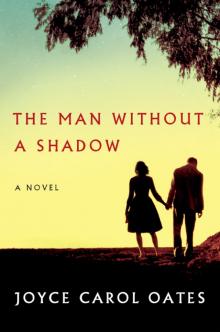 The Man Without a Shadow
The Man Without a Shadow Missing Mom
Missing Mom My Sister, My Love
My Sister, My Love The Gravedigger's Daughter
The Gravedigger's Daughter Beautiful Days
Beautiful Days The Lost Landscape
The Lost Landscape Daddy Love
Daddy Love Dreams from the Witch House: Female Voices of Lovecraftian Horror
Dreams from the Witch House: Female Voices of Lovecraftian Horror The Tattooed Girl
The Tattooed Girl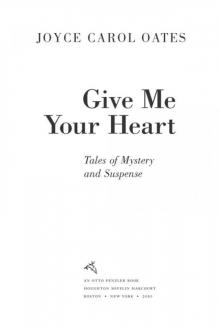 Give Me Your Heart
Give Me Your Heart In Rough Country
In Rough Country The Journal of Joyce Carol Oates
The Journal of Joyce Carol Oates Black Dahlia & White Rose: Stories
Black Dahlia & White Rose: Stories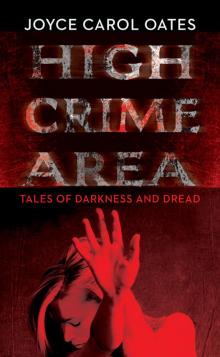 High Crime Area
High Crime Area Lovely, Dark, Deep
Lovely, Dark, Deep A Widow's Story
A Widow's Story Soul at the White Heat
Soul at the White Heat Wild Nights!
Wild Nights!